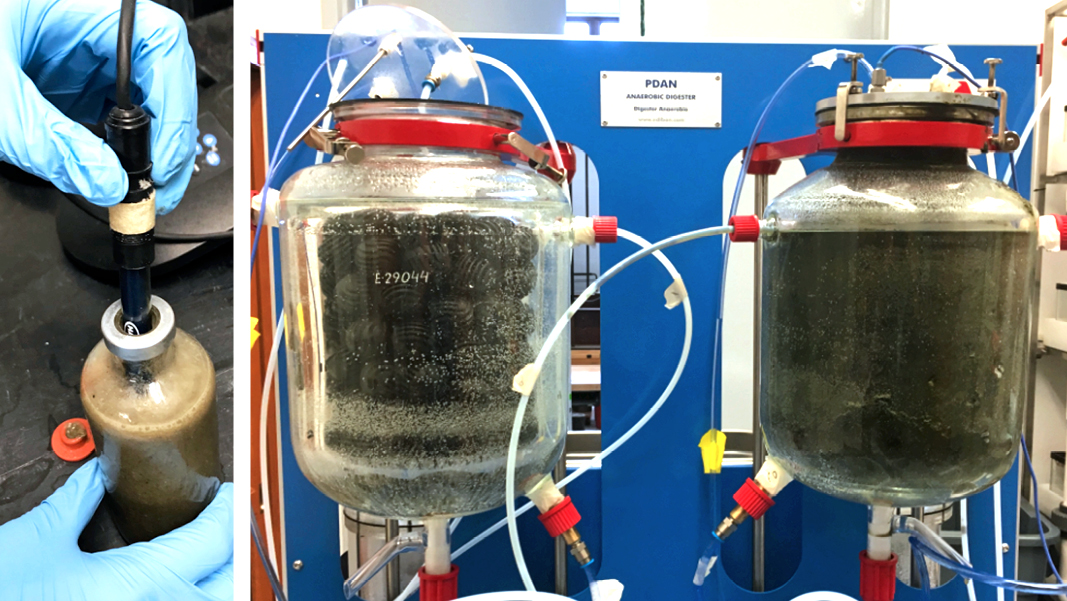Top: Lab-scale anaerobic digestion experiments at Florida Atlantic University. Photos courtesy of U.S. EPA Region 4.
The U.S. EPA has selected 12 recipients to receive approximately $3 million in funding to help reduce food loss and waste and to divert food waste from landfills by expanding anaerobic digester capacity in the United States. EPA Region 4, comprised of 8 Southeast states, announced that Emory University and Florida Atlantic University will be receiving grant funding under this award. Emory University plans to use its funds ($298,502) to establish a prototype on campus as a demonstration site to design an anaerobic digestion (AD) system for food waste that seeks to reduce environmental justice concerns that can be replicated by universities, corporations, local communities, and governments. Florida Atlantic University is anticipated to receive $195,426 to systematically develop the science needed to build the foundation of a regional organics diversion model that takes advantage of excess digester capacity at local wastewater treatment facilities. It plans to measure key organic waste properties and run laboratory scale experiments to develop engineering design parameters for scale-up, as well as evaluate scenarios to simulate and predict the environmental and economic impacts of a replicable organic waste diversion model.
“This is the first time the agency has had a national food waste grant around anaerobic digestion (AD),” explains EPA Region 4 Administrator Mary S. Walker. ”Through regional projects we have given grants to improve composting infrastructure for food waste, as well as grants to recover edible food for donation, such as at last year’s Superbowl in Atlanta. One of the exciting elements about this grant opportunity and advancing AD are the multiple benefits — not just recycling food waste but creating a renewable energy source that is very beneficial.”
Emory University’s focus on environmental justice made its proposal — out of the 114 submitted to EPA headquarters — unique, says Kim Charick of EPA Region 4. The university’s prototype “will demonstrate the value of AD in densely populated urban areas with high land and waste disposal costs,” states the Emory proposal. “Most importantly, Emory’s prototype will address upfront, in its design, environmental justice concerns of odor, noise, air quality from ammonia and other pollutants, water quality from effluents, quality of the digestate for food production, and acceptance of the resulting biogas to the utility.”
Walker adds that Region 4 is fortunate to be able to fund two grant projects through this national funding. “Food waste is a regional priority for us and we are very proud of our awardees who will develop and advance new ways of reducing environmental impacts and seeding research and education,” she notes.













